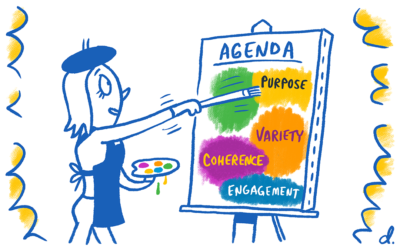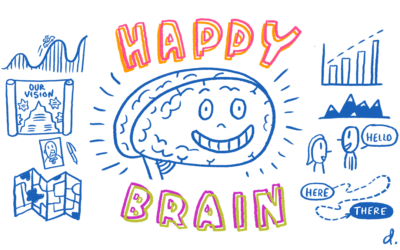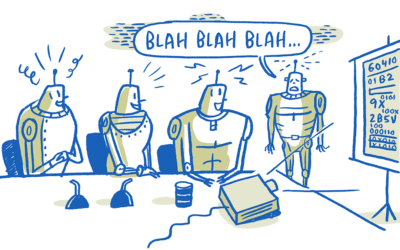How to Make Sure Your Project Gets off the Ground & Gains Traction
Many projects––even if they are well-conceived and identified as high impact––turn out to be duds that never gain traction. These failures lead to disappointment and finger-pointing within companies. It can be especially demoralizing when the same good idea comes around a second time and the boss says, “Wait, didn’t we prioritize that last year? What the hell happened?”
After working with leadership teams and watching hundreds of projects launch, these are the five factors I’ve observed that cause a project to fail, and what you can do about it.
1 – Senior Leaders Need To Care About It
The first and most important factor that causes failure is apathy from senior leaders. For a project to gain traction a senior leader has to champion it.
CEOs and senior leaders attend meetings every day, and what they talk about when they are conversing with other leaders matters. They brag about the things happening in the company that exemplify their vision.
Projects lacking an executive champion––however solidly conceived––can linger, stall, or be thrown off course by any number of factors. But a project gets unstuck when executive champion rattles the right people’s chains and marshals the necessary resources.
2 – Your Project Is No Match for the Organizational Antibodies
Every project will have skeptical naysayers, or “organizational antibodies,” as I call them. The function of these antibodies is to kill anything new that’s perceived as a threat. This is an important role in any organization because the antibodies force new ideas to undergo rigorous examination.
The problem for many company, however, is that the organizational antibodies are very strong, and the innovation capability is weak by contrast. The antibodies kill everything in sight and the status quo remains well protected.
Sometimes a project idea that sounded so great in the strategy meeting ends up, on closer inspection, to be misaligned to the company’s larger vision. In those cases, the corporate antibodies are doing the right thing to kill it.
When projects stall or die because they’re misaligned with the company strategy, it’s likely that the right people were missing from the initial meeting where the idea was generated.
3 – The Right People are Missing
This one goes to your culture and the question of who is invited into the room to innovate. The right people, in my view, are a mix of decision makers and doers, meaning those with authority to say yes, and those who have the understanding and technical chops to carry it out.
Not having the right people in the room means that eventually you will have to contend with one of the two lethal project killers, “hand-offs,” and “selling up.”
Companies that are organized traditionally and are heavily siloed conceive of products or initiatives in one silo, then hand them off to another silo to be implemented.
Companies that are organized to be nimble and smart have learned that every hand-off is an opportunity for a project to fail, and that people do a lot better implementing things they had a hand in conceiving. This is especially true for small, empowered teams who own a project from end to end.
The necessity to “sell up” is an even worse problem than hand-offs. If there are no decision makers involved at the inception phase of the project, you will need to work your way up the org chart convincing each tier that the project is essential.
Companies like to say they welcome ideas from anyone, but “selling up” the chain is painful, slow, and every step is an opportunity for the project to fail.
4- Your Project is Untethered from Purpose
Before you can generate great project ideas you need to understand and be able to articulate the needs of your changing customer, that is, a customer that doesn’t yet exist.
Also, your team needs to know and articulate what the desired future outcomes are for your organization. This is hard work and requires deep thought, but only with this foundation of insight can you begin to generate ideas that are really tethered to your purpose.
While ideas that pop out of a “brainstorm” might sound great at the time, they will fail if they are aren’t linked to customer needs and the greater organizational strategy. Ideas that emerge from a rigorous, outcomes-focused process are stronger, directly connected to the company vision for the future, and are well positioned to succeed.
5 – Lack of Capacity
Finally, if a project makes it through the four hurdles described above, there is one final opportunity for failure––the lack of capacity to deliver on it.
A team is assigned to implement a heavy lift while at the same time expected to meet their demanding current workload. This is a telltale sign that the project isn’t really a priority. The team struggles and months later the new project has barely gotten off the ground.
Projects need a dedicated team and project manager, two strong signals that the project matters and the executive champion is serious about putting it on a fast track to completion.
Nobody ever said that shepherding transformational projects through complex organizations, with all the competing priorities, would be easy. But you must succeed for your business to innovate and stay competitive.
Thinking in advance and planning for these five factors will develop stronger project concepts that can be driven to completion.
So if you want to be sure that your project gains traction and gets off the ground––have an executive champion on board from conception, make a plan for overcoming organizational antibodies, ensure the right people are in the room from the start, create time for an aligned outcomes-focused planning process, and line up the resource capacity for the project to succeed.




